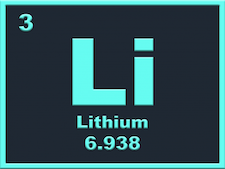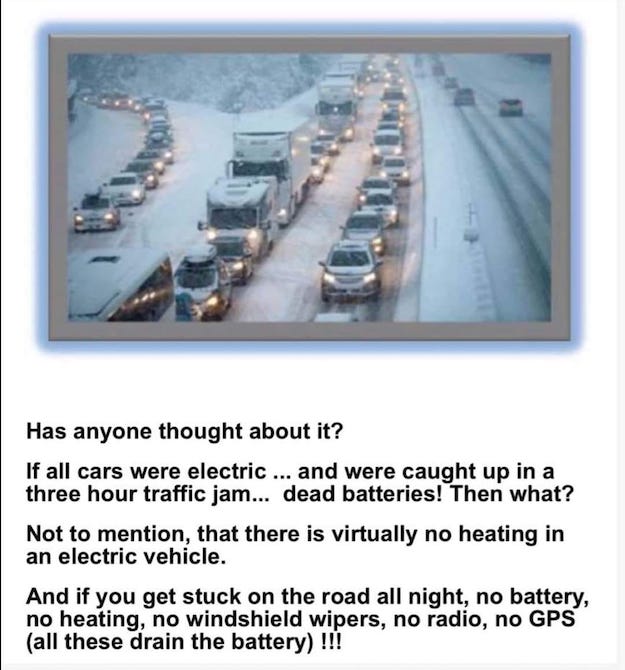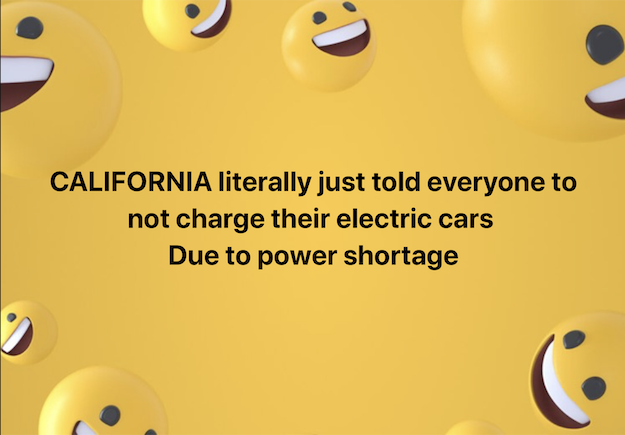
It is easy to spot control freaks these days: they shout at you in stores if you aren’t masked up; they pump out fear through newspapers; and they twist your arm to take experimental jabs. But the wheeling and dealing doesn’t stop there; now they want to sneakily get under your hood.
The great American highways — and the sedans and muscle cars that populate them — have since the post-war boom formed the circuitry that has energized and connected the nation. The freedom and convenience of the automobile has been the single most important technological and social development since humans first sparked up a fire. Talking of combustion, governments and environmental groups around the world have been critical of fossil fuels and carbon emissions for decades. Anyone who has cycled or walked in busy traffic knows that particulates and fumes from vehicles are unpleasant and harmful, but the prospect of clean propulsion should not be confused with the centralized automation of journeys and removal of personal vehicles. Autonomous cars do not equate to autonomy.
As we know from smart TVs, smart meters and smart cars, they are only as benevolent as the people who design and produce them. Flatscreen TVs can monitor a room, even when unplugged; mobile electric meters emit radiation and have been known to overcharge customers; and self-driving cars to date, routinely crash. The global warming schematic — with its questionable science — has been used to justify all manner of control measures, from carbon credits to international sanctions. The notions of vaccine passports, autonomous transport, AI-controlled personal devices and now “smart cities” follows a mentality espoused and implemented by China’s CCP and other communist and “socialist” states. The abrogation of personal responsibility, sovereignty and critical and creative faculties need not be the outcome of adopting and engaging with autonomous technology — but it is the risk if left to the same leaders and corporations behind the illegal wars, DC corruption and the general financial tyranny.
 If “sustainability” was really the underlying motive for electric over gas, then perhaps more scrutiny would be given to the mining of lithium, which is a crucial component for modern ion battery tech. The resources required to get the metal out of the ground, not least the huge amounts of water, render it an ecological travesty in its own right. And this is before we consider all the electricity required to run the smart cities, which presumably would still be nuclear or fossil-based power sources.
If “sustainability” was really the underlying motive for electric over gas, then perhaps more scrutiny would be given to the mining of lithium, which is a crucial component for modern ion battery tech. The resources required to get the metal out of the ground, not least the huge amounts of water, render it an ecological travesty in its own right. And this is before we consider all the electricity required to run the smart cities, which presumably would still be nuclear or fossil-based power sources.
So, where is the evidence for this proposition and what developments are underway that would suggest the ruling elites want us all hardwired?
Democratic lawmakers have recently pushed Joe Biden to introduce tougher vehicle emissions rules and to do more to shift the US towards electric vehicles. Reuters reported in March that a group of more than 70 House Democrats, led by Doris Matsui, wanted rules that ensured that “60 per cent of the new passenger cars and trucks sold are zero-emission by 2030,” while 10 senators, led by Democrat Edward Markey, urged Biden “to set a date by which new sales of fossil fuel vehicles will end entirely”.
Late last year, California Governor Gavin Newsom instigated new regulations to require all new cars and passenger trucks sold in California to be zero-emission by 2035. California has struck a deal with automakers, including Ford, Honda, BMW and Volkswagen, that falls between the Trump administration and Obama-era requirements.
Twenty-nine states have autonomous vehicle legislation in place and governors in Arizona, Delaware, Hawaii, Idaho, Illinois, Maine, Massachusetts, Minnesota, Ohio, Washington and Wisconsin have issued executive orders related to these vehicles.

They want you biking, walking, or using public transit. They do not want vehicles in their “smart cities” unless they are autonomous vehicles that are controlled in more ways than one.
A press release by Newsom’s office cites climate change as the impulse behind California’s demands for a drastic reduction in fossil fuel use. His executive order “will not prevent Californians from owning gasoline-powered cars or selling them on the used car market”. The press release states that “last September, Governor Newsom took action to leverage the state’s transportation systems and purchasing power to strengthen climate mitigation and resiliency and to measure and manage climate risks across the state’s $700 billion pension investments.” The order also directs state agencies to “develop strategies for an integrated, statewide rail and transit network”.
Pete Buttigieg, the transportation secretary, has been given $30.5 billion in federal funds “to support the nation’s public transportation systems as they continue to respond to the Covid-19 pandemic and support President Biden’s call to vaccinate the US population.” The American Rescue Plan Act is being used to formulate and roll-out the transportation plans, which are as yet vague.
“This is an important moment in our nation’s pandemic response,” said FTA Acting Administrator Nuria Fernandez. “The American Rescue Plan Act contains funding to help speed up vaccine distribution and provide relief to transit agencies so they can continue to provide service to the many Americans who depend on transit to get to essential jobs, healthcare and vaccine appointments.”
If, as many people now suspect, the Covid pandemic scenario has been manufactured as part of a control dynamic, then the Rescue Plan Act and its funding criteria are also worthy of scrutiny. “Formula funding” is now available to bidders, and those monies will be made available through the Notices of Funding Opportunity published in the Federal Register and “grants will be awarded following a competitive review and project selection process based on criteria outlined in the NOFOs”, according to the US Department of Transportation.
Buttigieg, a 39-year-old former mayor of South Bend, Indiana, is expected to broaden the definition of transportation, boost support of public transit and electric vehicles, and work with the housing and urban development department to leverage federal resources for “the next generation of infrastructure”.
The Transportation Department should allow “for enormous flexibility and literally let places like Pittsburgh reverse-engineer your policy,” said Bruce Katz, an urban planning expert who is connected to the Brookings Institute, a globalist think tank. “What Mayor Pete understands is really how to connect the dots.”

Buttigieg has made clear in previous statements that he is committed to carrying out Biden’s “build back better” initiatives — a phrase that has graced the podiums of world and corporate leaders throughout the past year. That will include moving forward with long-awaited federal rules governing autonomous vehicles and, Buttigieg hopes, making $150 billion available to the Federal Transit Administration, an almost 13-fold increase from its current budget of $12 billion.
“He’s going in the same direction as we are,” said Stan Caldwell, adjunct associate professor of transportation and public policy at Carnegie Mellon University — another “elite” institution that has hosted Buttigieg and other mayors at its national smart cities initiative.
Vincent Valdes, executive director of the Southwest Pennsylvania Commission, which oversees transportation planning across the city and 10 surrounding counties, told the Pittsburgh Post-Gazette that Buttigieg should create a “mobility czar” to coordinate a unified policy among state and local agencies. Too often, department officials are “working in their silos” on one mode of transportation: aviation, transit, highways, railroads, maritime, said Valdes.
Buttigieg, who was criticized during his 2020 presidential bid for not adequately addressing systemic racism when he was mayor of South Bend, has attempted to leverage race to his transport goals. During media interviews given on “Transportation Equity Day” in February, he claimed he was repentant for the government’s role in building a federal transportation system that often cut through minority neighborhoods in order to construct freeways, thereby cutting off those communities from economic opportunity.
“We recognize how misguided investments and missed opportunities for federal transportation policies have reinforced racial and economic inequality,” he told the African American Mayors Association.
Earlier this month the transportation secretary announced $187 million in Capital Investment Grants for four Bus Rapid Transit projects, in California, Utah, and Washington State. In a statement that would not look out of place in an Aldous Huxley essay, Nuria Fernandez said: “The local communities will greatly benefit from improved access and mobility to transit service, helping people reach vaccination sites, jobs, schools, and other important destinations.”
Huxley, the author of Brave New World, coined the phrase “technodictators” to describe dictators and would-bedictators who exploit emerging technologies to produce propaganda that “bypasses the rational side of man” and causes “him [to] actually love his slavery”.
The blogger SomeBitchToldMe claims that Buttigieg is involved in an “eco-communist” plot to destroy America. She cites his mooted plan for a per-mile tax on vehicles in the future — “seemingly to circumvent the rising fuel efficiency of cars that cut into the already-ludicrous fuel taxes we have today. By doing so, this would punish rural and poor drivers the most, as they drive farther and likely have cheaper vehicles with worse fuel efficiency,” she says. “Would this per-mile tax essentially become a double tax on the rural and middle class in America?”
Buttigieg’s father, Joseph, was a Marxist scholar who espoused the teachings of the Italian communist philosopher Antonio Gramsci, and was a founding member of the International Gramsci Society. Socialist and fascist states, as we know from Nazi Germany, Mussolini’s Italy and Franco’s Spain, spend lavishly on infrastructure projects that provide manual jobs and engage the collective will. Even though these large scale projects are often designed to be literal and idiomatic prisons for the population.

SomeBitchToldMe refers to a recent interview Buttigieg gave to CNBC in which he says he is considering a mileage tax to help cover the cost of infrastructure improvements, which are estimated at $3.5 trillion. “CNBC says they expect business taxes and high income individual taxes to go up, before she [the interviewer] asks about an increased gas tax. Buttigieg says they don’t want to increase the burden on the middle class, but then says a ‘mileage traveled tax’ could be the way to do it,” writes the blogger, who claims “progressives” believe the infrastructure project could cost upwards of $10 trillion.
In a press briefing given at the White House on April 9, Buttigieg, in answering questions from Jen Psaki, the press secretary, used tell-tale socialist phraseology:
“Americans are spending too much of their money on transportation in the wrong ways or don’t have access to it at all. And the American people are making clear to all of us, regardless of party, that they want us to get it done and they are not asking us to tinker around the edges,” he said.
The auto insurance industry is keen to push the belief that robotic cars are less risky than human drivers. In an article on Autoinsurance.org, Peter Rafferty, who is involved in the government’s testing of driverless vehicles, exclaims how the technology will save thousands of lives a year. “The important point with the almost 40,000 fatalities is that over 90 per cent of those are attributable in some way to human or driver error. The automated vehicles… they don’t fall asleep, they don’t get drunk, they see all around them. They react much faster. So that’s where big safety gains are going to be happening.”
Tesla, which is known for overstating the abilities of its cars, has had notable failures of its autopilot facility, leading to fatalities among drivers who became complacent about the technology. Other leading players in the autonomous car market are Waymo, GM, Aptiv, Daimler-Bosch and Volkswagen. The lithium-based power packs for the cars have been linked to water shortages as mine sites in Argentina, Bolivia, Chile, Australia and China.
“We’re fooling ourselves if we call this sustainable and green mining. The lithium fever should slow down because it’s directly damaging salt flats, the ecosystem and local communities.” Cristina Dorador, a Chilean biologist, told Bloomberg.
 But we can count on Bill Gates to save the day. Breakthrough Energy Ventures, helmed by Gates and MIT’s The Engine fund, are leading an investment round of $20 million for Lilac Solutions, a US start-up that aims to make the extraction of lithium less water-intensive and more sustainable.
But we can count on Bill Gates to save the day. Breakthrough Energy Ventures, helmed by Gates and MIT’s The Engine fund, are leading an investment round of $20 million for Lilac Solutions, a US start-up that aims to make the extraction of lithium less water-intensive and more sustainable.
Interior Secretary Deb Haaland just revoked several Trump administration orders that had promoted fossil fuel development, while calling the orders of her predecessors “inconsistent with the department’s commitment to protect public health; conserve land, water, and wildlife; and elevate science.” She also announced that the previous orders “titled the balanced of public land and ocean management without regard for climate change, equity or community engagement.”
China leads the industry through Ganfeng Lithium, a mining company that has evolved into the refining and processing of lithium, battery manufacturing, and recycling; and the EV battery manufacturer Contemporary Amperex Technology. Japan’s Panasonic is one of the top three EV battery makers, with Livent of the US not far behind.
SFA (Oxford), a market intelligence firm, claims that while lithium supply is plentiful in the near term, its demand is likely to grow mainly from electric vehicles and because its future market outlook is bright.

Joke? No Joke? Makes Sense!
The largest producers in 2019 were Australia, with 52.9 per cent of global production, followed by Chile, with 21.5 per cent; China at 9.7 per cent; and Argentina at 8.3 per cent. The claim that US industry will be less reliant on other countries (by up to 60 per cent) by switching out of fossil fuels is undermined by these figures on lithium.
The US Interior Department listed lithium as a critical mineral in 2018, fast-tracking mine permits. Although the US has the world’s fourth-largest lithium reserves, measured at 6.8 million tonnes according to the US Geological Survey, production activity in the country is minimal.
In California, lithium has been produced from Searles Lake brines since 1938, and during earlier years lepidolite was mined in the Pala district. Other states containing lithium deposits are New Mexico, Colorado, Wyoming, Connecticut, Maine and Massachusetts.
Is smart the new dumb? It’s all enough to have you reaching into the cupboard for the lithium salts.

Written by James Fitzgerald for Corey’s Digs ~ April 19, 2021

this country, led by depraved minded idiots, is destroying itself.